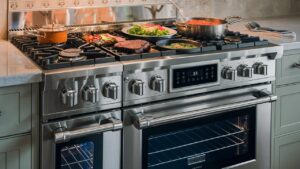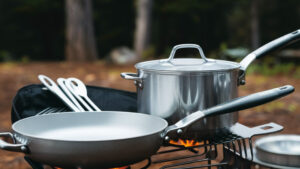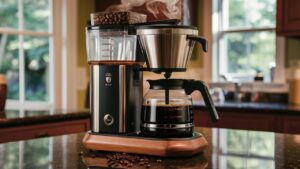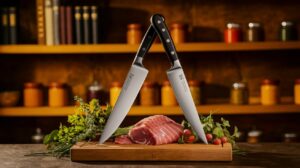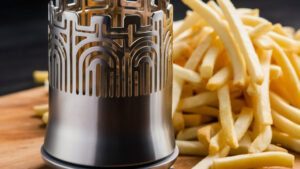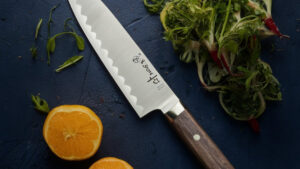Are you tired of food sticking to your pans, especially when cooking on an induction stove? Choosing the right nonstick cookware can completely transform your cooking experience, making it easier and more enjoyable.
But with so many options available, how do you decide which one is best for your kitchen? In this guide, you’ll discover the secrets to selecting the perfect nonstick cookware specifically designed for induction cooking. Imagine the ease of flipping pancakes without a hitch or searing that perfect steak with a flawless finish.
By the end of this article, you’ll know exactly what to look for and feel confident in making a purchase that suits your needs. Dive in to unlock the door to effortless cooking and elevate your culinary creations to new heights.
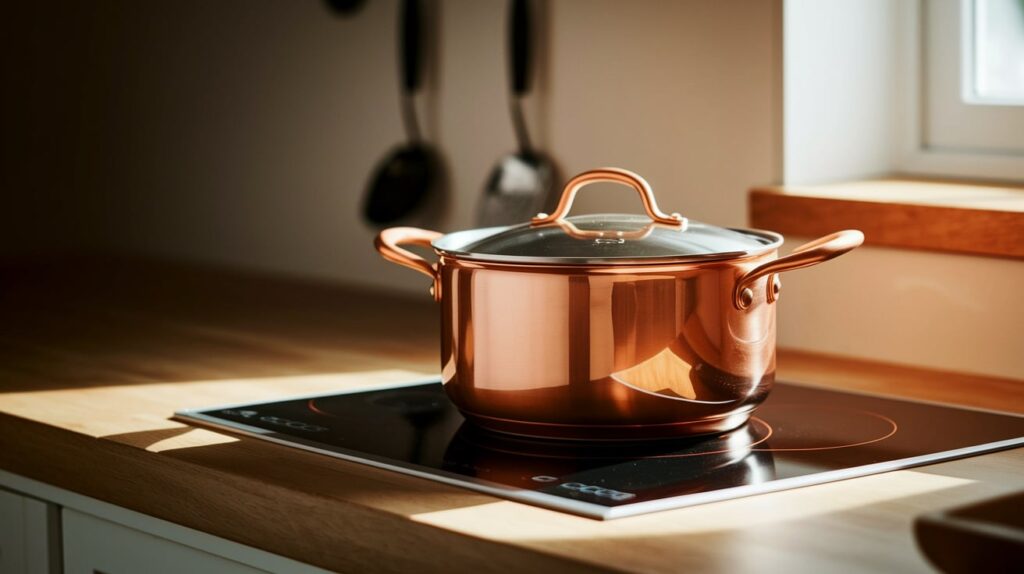
Key Features Of Nonstick Cookware
Choosing the right nonstick cookware for induction cooking involves understanding key features. These features ensure you get the best performance and longevity. Let’s explore the essential elements that make nonstick cookware ideal for induction cooking.
Material Types
The material of your cookware affects its performance. Stainless steel is popular for its durability. Aluminum is lightweight and heats quickly. Both can work well with induction when they have a magnetic base. Cast iron retains heat but is heavier. Each material has its benefits. Choose based on your cooking needs.
Coating Durability
Durable nonstick coatings make cooking easier. They prevent food from sticking and allow easy cleaning. Teflon is common, but ceramic coatings are gaining popularity. Look for PFOA-free options for safety. A good coating should last long and resist scratches. Check reviews to ensure quality before buying.
Heat Resistance
Heat resistance is crucial for nonstick cookware. It should withstand high temperatures without damage. This ensures the coating doesn’t degrade over time. Look for cookware that can handle at least 400°F. This is important for induction cooking, which heats quickly. Proper heat resistance ensures your cookware lasts longer.
Compatibility With Induction Stoves
Choosing the right nonstick cookware for your induction stove can seem like a daunting task. It’s not just about picking the perfect color or brand; the key lies in compatibility. If your cookware isn’t compatible, you’ll be left with a beautiful set that doesn’t heat up properly. Understanding how nonstick cookware interacts with induction stoves can save you time, money, and frustration.
Magnetic Properties
Induction stoves rely on magnetic fields to generate heat. This means your cookware needs to be magnetic. When I first switched to induction cooking, I learned the hard way that my favorite aluminum pan wouldn’t work. To ensure compatibility, check if a magnet sticks firmly to the bottom of the cookware. This simple test can save you from buying the wrong set.
Base Construction
The construction of the cookware base plays a crucial role in its compatibility with induction stoves. Look for cookware with a flat and sturdy base. A warped or uneven base may not make proper contact with the stovetop. Consider stainless steel or cast iron bases, as these materials are ideal for induction cooking.
Testing For Compatibility
Before making a purchase, test the cookware for compatibility. You can carry a small magnet with you when shopping. Another option is to check for induction-compatible labels on the packaging. This extra step ensures that your cookware will work seamlessly with your induction stove.
Does your current cookware pass the magnet test? If not, it might be time for an upgrade. Finding the right nonstick cookware for induction cooking doesn’t have to be a guessing game. With these tips, you can confidently select a set that suits your cooking needs and enhances your kitchen experience.
Health And Safety Considerations
Choosing nonstick cookware for induction cooking demands careful attention to health and safety. Opt for PFOA-free options to ensure safety. Compatibility with induction stovetops is crucial for efficient cooking.
Choosing the right nonstick cookware for your induction cooktop goes beyond just ensuring compatibility. Health and safety should be at the top of your list. Your cookware directly impacts what you eat and how you cook. Making informed choices can help you maintain a healthy lifestyle. Let’s dive into some key health and safety considerations to keep in mind.
Non-toxic Coatings
Opting for non-toxic coatings is crucial for your health. Many traditional nonstick pans have coatings made from Teflon, which can release harmful fumes if overheated. Look for cookware labeled as PFOA-free and PTFE-free. These labels indicate safer options that won’t compromise your health. Ceramic-coated pans are a popular choice. They offer a non-toxic alternative while providing excellent nonstick performance. Remember, the goal is to keep your food free from unwanted chemicals.
Avoiding Harmful Chemicals
Consider the materials used in your cookware. Stainless steel bases with a nonstick surface are a safe bet. They offer durability and are less likely to leach harmful substances into your food. This combination also ensures your cookware works efficiently on induction cooktops. Avoid products with coatings that are unfamiliar or lack clear labeling. If you’re unsure about a material, do some quick research or ask for advice. You might be surprised how much peace of mind a little knowledge can bring. When I switched to induction cooking, I made a conscious effort to choose healthier options. It was enlightening to learn about the hidden dangers in some cookware. This small change made a big difference in my kitchen and gave me confidence in what I serve my family. What steps are you willing to take for a safer cooking environment? Making informed choices today can lead to healthier tomorrows.
Maintenance And Care Tips
Choosing nonstick cookware for induction cooking requires attention to material compatibility and durability. Opt for cookware with a magnetic base and ensure it’s suitable for high heat. Regular cleaning maintains the nonstick surface, prolonging its lifespan.
When using nonstick cookware on induction cooktops, proper maintenance is essential. It helps in prolonging the life and performance of your cookware. Following some basic care tips can keep your nonstick surfaces in great condition. Let’s dive into these maintenance and care tips to ensure your cookware lasts longer.
Cleaning Techniques
Clean your nonstick cookware with warm, soapy water. Use a soft sponge or cloth to avoid scratches. Avoid steel wool or abrasive pads. They can damage the nonstick surface. Dry the cookware thoroughly after washing. This prevents water spots and keeps it looking new. For stubborn residues, soak the pan in warm water. Then, gently wipe it away.
Preserving Nonstick Coating
Always use utensils made of wood, silicone, or plastic. Metal utensils can scratch the nonstick surface. Keep the heat at medium or low settings. High heat can damage the coating over time. Apply a small amount of oil before cooking. It helps in maintaining the nonstick property. Avoid cooking sprays as they can leave residues.
Storage Tips
Store your nonstick cookware carefully to prevent scratches. Stack pans with a soft cloth or paper towel between them. This provides a protective layer. Hanging pots and pans can also save space. It prevents direct contact with other cookware. Ensure your storage area is dry and clean. Moisture can lead to rust on metal parts.
Budget And Brand Options
Choosing nonstick cookware for induction cooking can be tricky. Balancing your budget with quality is crucial. Different brands offer varied options, from affordable to premium. Understanding these choices helps in making an informed decision.
Affordable Choices
Many brands provide budget-friendly nonstick cookware for induction cooking. T-fal is a popular choice. It offers durable, induction-compatible pans at reasonable prices. GreenLife also stands out with eco-friendly options. Their pans are PFOA-free and work well on induction stoves. Cuisinart offers affordable sets with good performance. These brands provide quality without breaking the bank.
Premium Brands
For those seeking luxury, premium brands offer exceptional quality. All-Clad is renowned for its durability and performance. Their nonstick pans ensure even heat distribution. Le Creuset is another top-tier brand. They offer stylish and reliable induction cookware. Scanpan provides high-end nonstick options with sustainable materials. These brands are perfect for those prioritizing quality over cost.
User Reviews And Recommendations
Explore user reviews for insights on nonstick cookware compatible with induction cooking. Recommendations highlight durability, heat distribution, and ease of cleaning. Feedback from experienced users helps identify top-performing options.
Choosing the perfect nonstick cookware for induction cooking can be daunting. User reviews and expert recommendations can be your guiding light. By listening to the experiences of others, you can make informed decisions and avoid common pitfalls.
Common User Feedback
User feedback is a treasure trove of insights. Many users love the quick and even heat distribution of nonstick cookware designed for induction. Some praise the ease of cleaning, noting that a simple wipe often suffices. However, durability often pops up as a concern. Users mention that the nonstick coating can wear off with time, especially with metal utensils. It’s worth considering how you plan to use and maintain your cookware.
Expert Opinions
Experts weigh in with valuable advice. They often stress the importance of choosing cookware with a magnetic base. This ensures compatibility with induction cooktops and maximizes efficiency. Experts also recommend looking for PFOA-free coatings for a healthier cooking experience. They suggest prioritizing brands known for quality and longevity. Have you considered the opinions of both users and experts? Balancing these perspectives can lead to the best choice for your needs.
Frequently Asked Questions
What Is Induction Cooking?
Induction cooking uses electromagnetic fields to directly heat pots and pans. It’s faster and more energy-efficient than traditional methods. Induction requires cookware with a magnetic base to work effectively. This technology is becoming popular due to its speed and safety features.
Why Use Nonstick Cookware For Induction Cooking?
Nonstick cookware offers easy food release and quick cleanup. It’s ideal for induction cooking as it prevents food from sticking. Using nonstick ensures even heat distribution, enhancing your cooking experience. Always choose induction-compatible nonstick cookware for best results.
How To Know If Cookware Is Induction-ready?
Check for a label or magnet test on the cookware bottom. Induction-ready cookware usually has a coil symbol. A simple magnet test can confirm compatibility. If a magnet sticks, the cookware will work on induction. Always verify before purchase.
Are All Nonstick Coatings Safe For Induction?
Not all nonstick coatings are suitable for induction cooking. Ensure your nonstick cookware is labeled as induction-friendly. Look for reputable brands and check product specifications. Safety is important, so always verify compatibility.
Conclusion
Choosing the right nonstick cookware for induction is simple. Understand your cooking needs first. Look for compatibility with induction stoves. Check for quality materials. Consider the price range that suits your budget. Explore various brands for reliable options. Read user reviews online.
They provide real-life insights. Don’t forget about maintenance and durability. Good cookware should last long. Balance features with price for the best choice. Enjoy cooking with your new cookware. Quality tools make cooking enjoyable and efficient. Remember, the right choice enhances your cooking experience.
Happy cooking!
